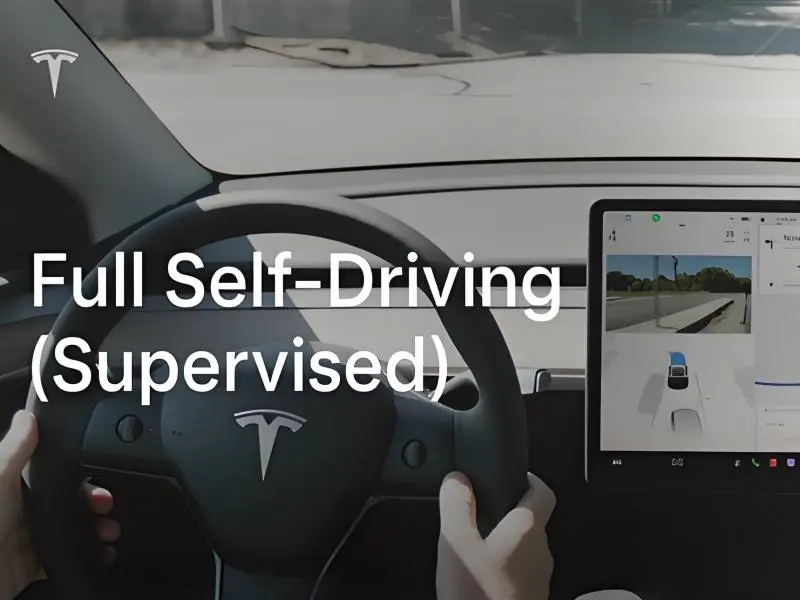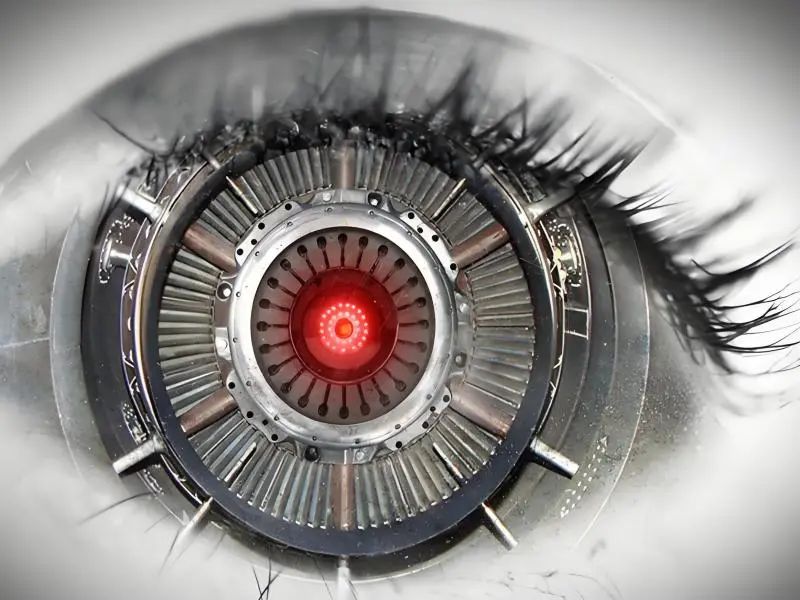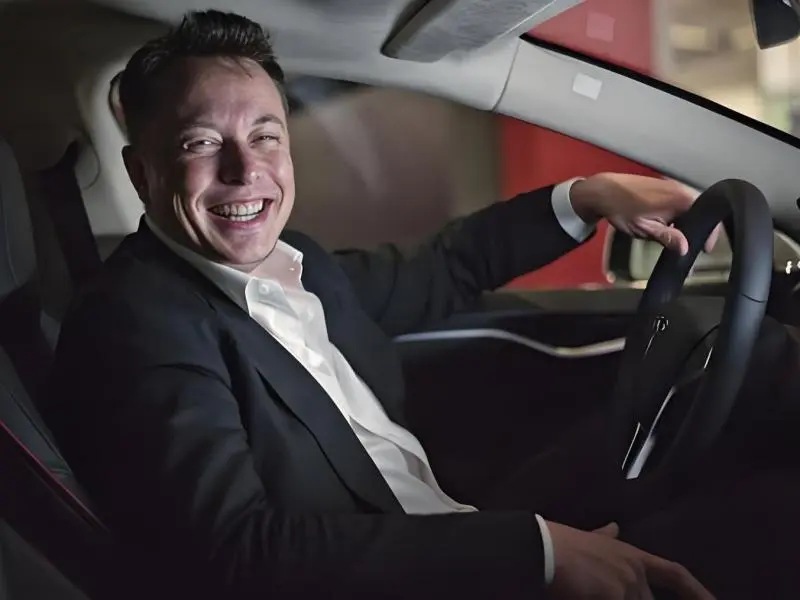- Tesla, a leader in electric vehicle innovation, is making strides in the realm of autonomous driving with its Full Self-Driving cameras.
- These advanced cameras are designed to replicate the complexity and precision of human vision, taking autonomous vehicle technology to new heights.
OUR TAKE
Tesla’s Full Self-Driving (FSD) cameras represent a significant leap in the development of autonomous driving systems. By striving to replicate human vision, Tesla is not only enhancing the safety and reliability of its vehicles but also paving the way for a future where self-driving cars are an integral part of our transportation ecosystem. As the technology evolves, the impact of these advancements on the automotive industry and society at large will be profound.
–Rebecca Xu, BTW reporter
Understanding Full Self-Driving (Supervised)
Full Self-Driving (Supervised) is a term used to describe a level of autonomous driving technology where the vehicle is capable of handling most driving tasks independently, but still requires constant supervision and intervention from a human driver. This level of automation is considered to be a step below fully autonomous driving, where the vehicle is able to operate without any human intervention under all conditions.
In the context of Tesla vehicles, Full Self-Driving (Supervised) refers to the advanced driver-assistance features available through Tesla’s Full Self-Driving package. This package includes features such as Navigate on Autopilot, Autopark, and Summon, which allow the vehicle to automatically navigate highways, park itself, and come to the driver’s location in a parking lot, among other functions. However, the driver is still expected to remain attentive and ready to take control of the vehicle at any time.
The thing to appreciate is not that Full Self-Driving will be as good as a person. It will be much, much better, like a lot.
Elon Musk, CEO of Tesla
“The thing to appreciate is not that Full Self-Driving will be as good as a person. It will be much, much better, like a lot. Over time, ten times safer than a person. It’s not even going to be a contest frankly. So, this is a really big deal,” said Elon Musk during a 2023 Tesla shareholder meeting, emphasising the significant leap in safety and capability that Full Self-Driving technology promises for the future of autonomous driving.

Also read: Tesla to launch a robot taxi service using Dojo
Also read: Tesla Accelerates Full Self-Driving Campaign with Pre-Installed FSD Beta
The science behind Tesla’s FSD cameras
In the ever-evolving world of autonomous driving technology, Tesla has been at the forefront with its FSD system, which relies heavily on advanced cameras to navigate the complexities of the road.
Tesla’s FSD cameras are part of a sophisticated sensor suite that includes cameras, radar, ultrasonic sensors, and a powerful onboard computer. The cameras serve as the eyes of the vehicle, capturing high-resolution images of the surrounding environment and feeding that information to the computer for processing. What sets Tesla’s cameras apart is their ability to capture a wide range of visual data, including colours, shapes, and distances, mimicking the capabilities of the human eye.
The FSD cameras use machine learning algorithms to interpret the visual data and make critical decisions in real-time. These algorithms are trained on vast amounts of data collected from Tesla vehicles on the road, allowing the system to continuously improve and adapt to different driving conditions. By analysing patterns in the data, the FSD cameras can detect lane markings, traffic lights, road signs, pedestrians, and other objects on the road, helping the vehicle make informed decisions while driving autonomously.
One of the key challenges in replicating human vision with FSD cameras is ensuring accuracy and reliability in diverse environments and lighting conditions. Tesla has tackled this challenge by using a combination of visible light cameras and infrared cameras that can see in low-light and nighttime conditions. Additionally, the cameras are equipped with advanced image processing techniques to filter out noise and enhance image clarity, improving the system’s ability to make precise judgements on the road.
As Tesla continues to refine its FSD technology, the science behind its cameras remains a crucial aspect of achieving fully autonomous driving. By harnessing the power of machine learning and advanced sensor technology, Tesla is paving the way for a future where cars can navigate the roads with the complexity and precision of human vision.
Pop quiz
What is the purpose of Tesla’s Full Self-Driving technology?
A. To enhance the in-car entertainment system.
B. To increase fuel efficiency in Tesla vehicles.
C. To improve the comfort of the passenger seats.
D. To provide advanced driver-assistance features.
The answer is at the bottom of this article.
Comparing Tesla’s FSD cameras to human vision: a closer look
High-resolution imaging: Capturing the road in detail
Tesla’s FSD cameras are designed to replicate the complexity and precision of human vision by capturing high-resolution images of the surroundings in real-time. Similar to the human eye, these cameras provide a detailed view of the road, lane markings, traffic signs, and surrounding objects. The high-resolution imaging allows the onboard computer to analyse the visual data and make informed decisions while driving autonomously.
Machine learning algorithms: Processing visual data like the human brain
One of the key features of Tesla’s FSD cameras is their use of machine learning algorithms to interpret visual data, mimicking the way the human brain processes visual information. These algorithms are continuously trained on vast amounts of data collected from Tesla vehicles on the road. By analysing patterns in the data, the cameras can detect and identify lane markings, traffic lights, pedestrians, and other objects on the road, allowing the vehicle to navigate safely and efficiently.
Continuous improvement: Learning from data for adaptive driving
Tesla’s FSD cameras are constantly learning and improving, much like the human visual system. The cameras are trained on diverse driving conditions and scenarios to adapt and make better decisions over time. This continuous learning process enables the FSD system to become more reliable and adept at handling various driving situations, bringing it closer to achieving full autonomy.
Overcoming challenges: Visible light and infrared cameras for varied conditions
To overcome challenges such as diverse environments and lighting conditions, Tesla’s FSD cameras utilise a combination of visible light and infrared cameras. The visible light cameras capture detailed images of the surroundings during daytime, while the infrared cameras enable the system to “see” in low-light and nighttime conditions. This dual-camera setup ensures that the FSD system can operate effectively in any lighting environment, much like the human eye’s ability to adjust to different light conditions.
Image processing techniques: Enhancing clarity and precision
Advanced image processing techniques are employed to filter out noise and enhance image clarity, ensuring accuracy and reliability in making critical driving decisions. By enhancing the quality of visual data captured by the cameras, Tesla’s FSD system can make precise judgements on the road, mirroring the precision of human vision.
Advancements towards autonomy: Achieving human vision precision in autonomous driving
Through ongoing advancements in sensor technology and machine learning, Tesla’s FSD cameras are on a path to achieving full autonomy with the complexity and precision of human vision. By harnessing the power of advanced imaging technology and data processing, Tesla is paving the way for a future where self-driving cars can navigate the roads with the same level of precision and adaptability as human drivers. As technology continues to evolve, we can expect even greater innovations in the science behind Tesla’s FSD cameras, bringing us closer to a new era of autonomous driving.

Exploring the challenges of replicating human vision with Tesla’s FSD cameras
Overcoming the complexity of visual data: Replicating human vision’s ability to perceive depth, colours, shapes, and motion poses a challenge for FSD cameras. Tesla’s cameras must capture and interpret a vast amount of visual data in real-time to identify and respond to elements on the road accurately.
Handling varied lighting scenarios: Adapting to diverse environmental conditions and lighting scenarios is essential for FSD cameras to function effectively. Tesla’s cameras must be equipped with advanced sensor technology to ensure accurate perception in various lighting conditions.
FSD is a fully self-driving mode, based on the current stage of regulations, the complete landing is not very likely.
A user from Weibo
Different legal frameworks and standards: The deployment of Tesla’s FSD technology faces a myriad of legal and regulatory challenges. As autonomous vehicles navigate uncharted territories, the need for clear and adaptive legislation is paramount. Current traffic laws are predominantly designed for human-driven vehicles, posing a gap in addressing the responsibilities and liabilities of AI-driven systems. A Weibo user said, “FSD is a fully self-driving mode, based on the current stage of regulations, the complete landing is not very likely.”
Reliability and accuracy in real-time: FSD cameras need to make precise decisions quickly to navigate safely in complex driving environments.
The future of autonomous driving: a perspective on Tesla’s FSD cameras
The concept of autonomous driving has long been the subject of science fiction, but with advancements in technology, it is becoming a reality. Tesla, known for its innovative approach to electric vehicles and autonomy, is leading the charge towards a future where cars can navigate the roads without human intervention. At the heart of this vision is Tesla’s FSD system, which relies on advanced cameras, sensors, and artificial intelligence to enable vehicles to drive autonomously.
Looking towards the future, the potential impact of Tesla’s FSD cameras on autonomous driving is significant. As the technology continues to evolve and improve, we can expect to see a shift towards a transportation landscape where self-driving cars are the norm rather than the exception. Tesla’s commitment to innovation and pushing the boundaries of autonomy suggests that the future of driving will be increasingly autonomous, with vehicles equipped with advanced camera systems capable of replicating the complexity and precision of human vision.

The correct answer to the pop quiz is D. To provide advanced driver-assistance features.
